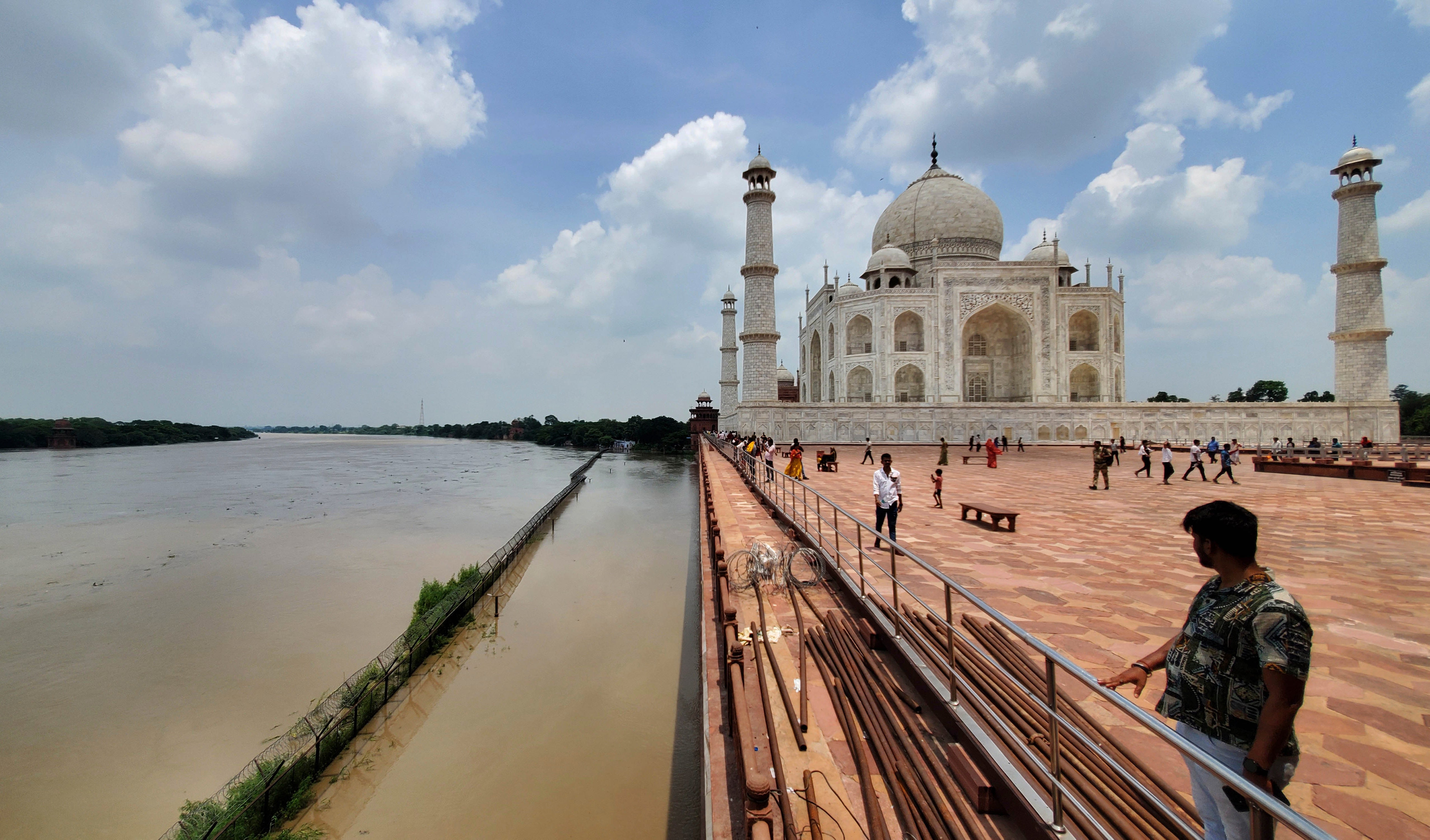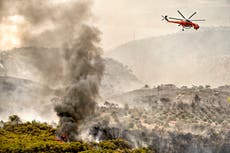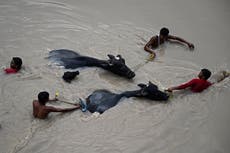Extreme monsoon raises river to walls of Taj Mahal amid fears of damage to one of world’s seven wonders
The river last reached the walls of the monument 45 years ago
Torrential rain and floods in northern India have raised concerns over potential harm to the Taj Mahal, where water from the overflowing Yamuna river has reached its compound walls.
The water level of the Yamuna has swelled up because of constant rains in the region and caused floods in national capital Delhi, where the river cuts across.
The river also flows right next to the Taj Mahal which is 242km away in the city of Agra.
On Tuesday, its water level near the 17th century monument rose to 152m, surpassing the warning level of 151.4m, indicating potential danger, according to India’s Central Water Commission (CWC).
The critical level, considered unsafe, is 152.4m. And since the commencement of the four-month monsoon season on 1 June, the state of Uttar Pradesh, where Agra is located, has experienced rainfall equivalent to 108 per cent of its usual amount.
The swelling of the river driven by unusually heavy rains has raised worries about potential harm to the 17th-century white marble monument, built by Mughal emperor Shah Jahan in memory of his queen Mumtaz Mahal.
“If it rains more, or the water stays this high for some days, we will need to assess the situation again,” Raj Kumar Patel, superintendent archaeologist with the Archaeological Survey of India (ASI), the government agency responsible for the conservation of historical monuments, told Reuters.
But there was “no serious concern” about the monument as of now.

Mr Patel, however, said numerous other monuments and gardens situated near the Taj Mahal, closer to the banks of the Yamuna, “have been submerged” and suffered damage.
Among the affected sites are the tomb of Itimad-ud-Daulah, popularly known as “baby Taj”, which dates back to the 1600s and Mehtab Bagh, also from the same period.
The structure of Mehtab Bagh has suffered damage, it was reported, and its once beautiful garden area is now completely submerged and destroyed.
Visuals of the surging Yamuna river near the Taj Mahal have also been widely shared on social media.
The river had last reached the walls of the monument 45 years ago in 1978.
CWC data also revealed that its station near the Taj Mahal recorded the river’s highest flood level that year, reaching 154.76m.
On social media, some citizens expressed fears about the water level near the monument.
“It’s one thing to see Yamuna get to the Old Delhi Fort... but seeing it reach the Taj Mahal is... a whole diff level of scary. As they say, the river never forgets,” tweeted journalist Vidya Krishnan.
The swelling of the Yamuna due to torrential rains caused by worsening climate crisis in northern India have led to thousands being evacuated in Delhi.
At least 100 people have died after heavy rains.
The river had flowed above the “danger mark” in Delhi and prompted deadly landslides as well as floods in two other states.
The city state received record single-day rain earlier this month, the highest since July 1982. Experts say climate crisis is fuelling more rainfall in India as the country is hit by frequent and prolonged heatwaves
Additional reporting by agencies
Join our commenting forum
Join thought-provoking conversations, follow other Independent readers and see their replies
Comments





Bookmark popover
Removed from bookmarks